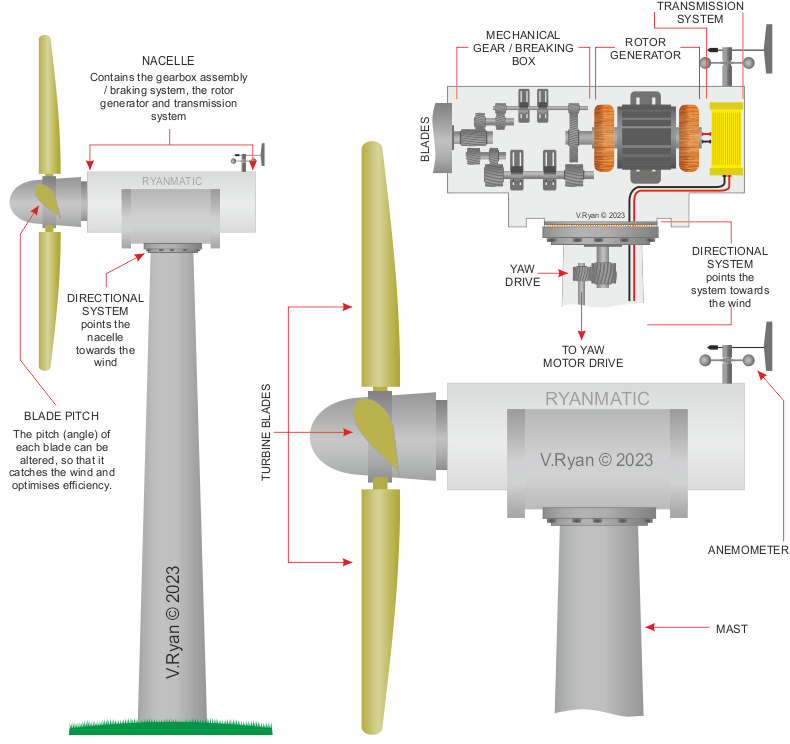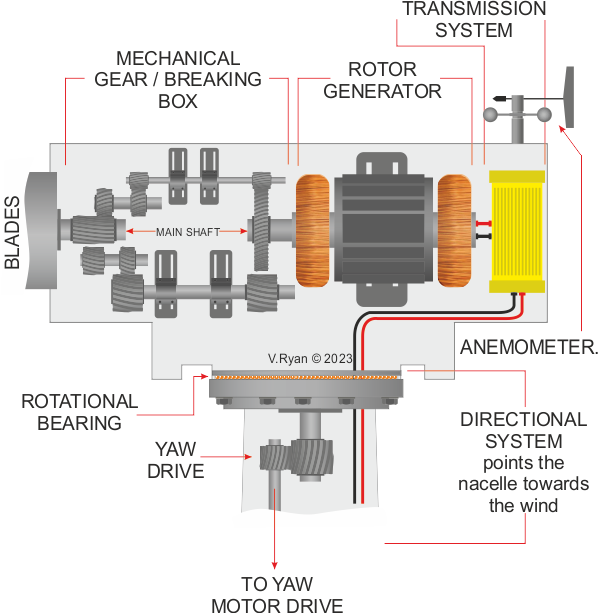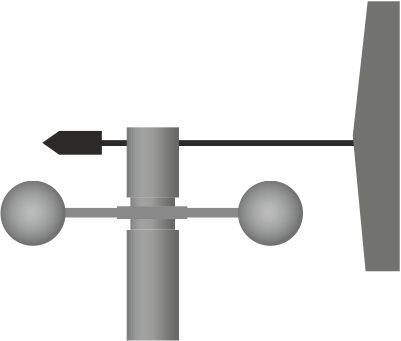Simply, wind generators catch the wind, rotating the turbine blades. The rotation of the blades is converted into electricity. However, there is a little more to this process.
The aerodynamic blades catch the wind, rotating the main shaft. The gear box is an arrangement of individual gears, that are set to keep the rotation of the main shaft under control. This ensures that the rotation of the shaft is at its most efficient, regardless the strength of the wind. The Rotor Generator converts the rotation of the shaft into electricity, that is fed through the transmission system. This converts the electricity into a form that can be transmitted into the electrical grid, feeding homes and businesses.
The anemometer, detects the direction and speed of the wind. It sends signals to the control system, which adjusts the direction of the Nacelle, so that it faces the oncoming wind. This is achieved through the Yaw Motor wand Yaw Drive.
The pitch (angle) of each blade can be altered, so that it catches the wind and optimises efficiency.


The anemometer sits at the top of the generator.
